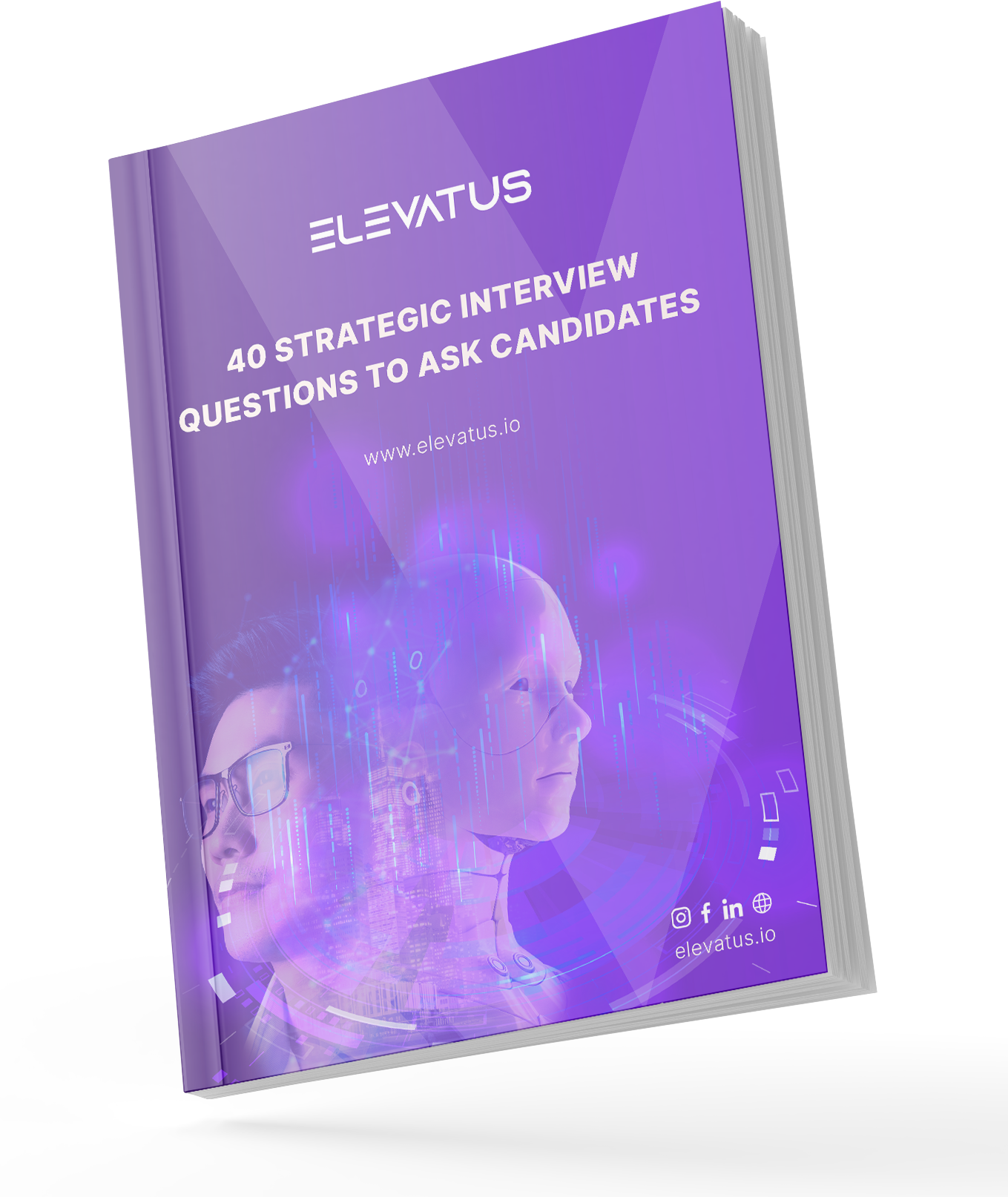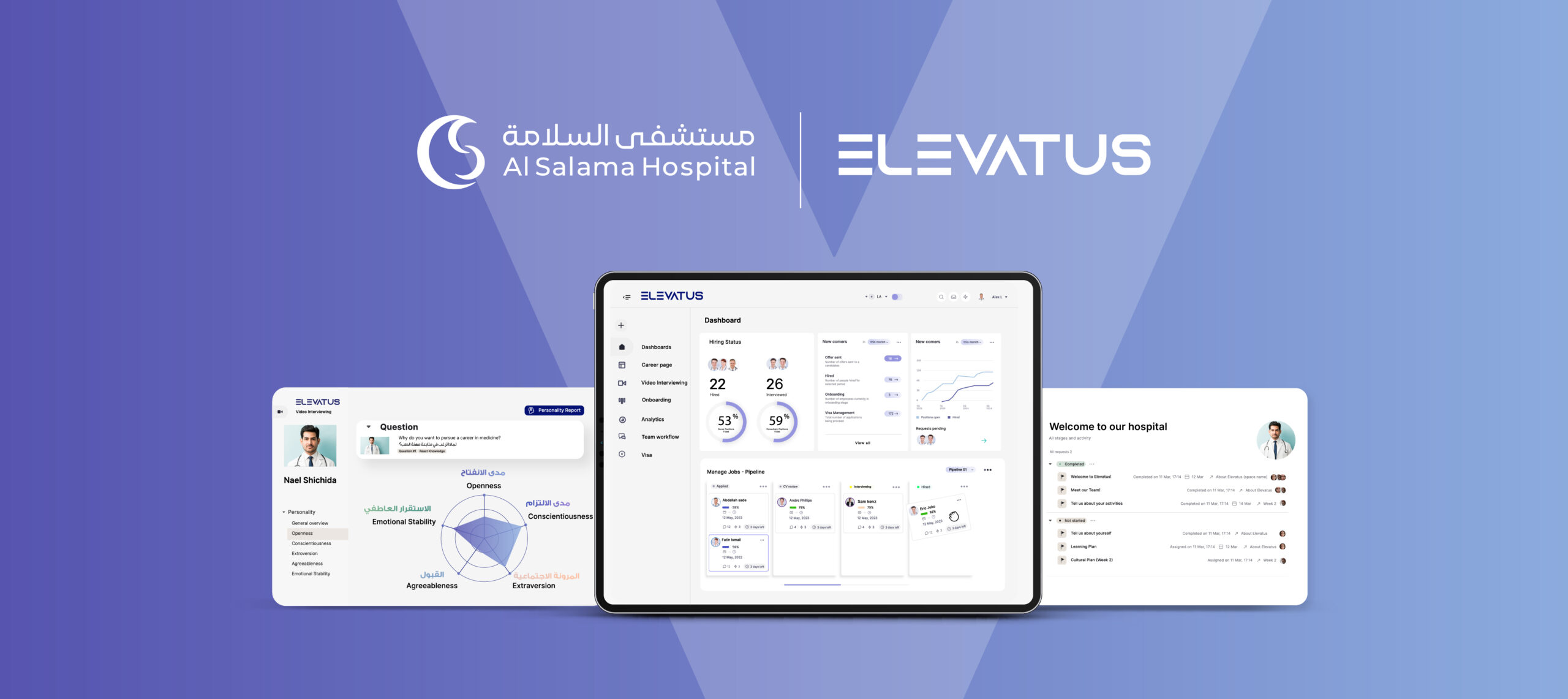
Hiring Strategies
Revolutionary Strategies for Turbocharging Your Hiring Efficiency in the Dynamic Tech Sector
March 22, 2024



Kiran Kazim
Content Writer
As you click through yet another batch of candidate profiles, a sense of dread settles in.
With each scroll, the realization hits: the tech talent you desperately need seems as elusive as ever.
Like facing a series of overdue bills, the pressure mounts. There’s the invoice for the recruitment platform subscription you’ve yet to see a return on, the looming deadline for the project that needed these new hires yesterday, and the stark reminder of the competitive edge you’re at risk of losing. The digital equivalent of a power cut-off notice, warning that without the right talent, your projects—and perhaps even your department—could be in jeopardy!
Closing your laptop, you exhale deeply.
It feels like a race against time, constantly trying to outpace competitors, technology evolution, and even your own expectations. Despite a solid strategy and the resources at your disposal, the fear lingers: what if you can’t bridge the talent gap? What if, despite all efforts, your team becomes obsolete, unable to keep up with the tech industry’s relentless march forward?
In the tech recruitment world, the challenge isn’t just filling positions—it’s finding the innovators and geniuses who’ll drive your company forward. This blog offers innovative tactics so you can learn how to improve recruiting efficiency. Discover strategies to keep your team at the tech industry’s cutting edge, ensuring it thrives in our fast-paced digital era.
Build a candidate experience that comes first
See how our award-winning ATS can help you deepen your talent pool and fill positions faster by building an immersive and modern candidate experience.
Request a demoTable of Contents
Winning Strategies in the Tech Industry’s Speed Race


In an industry where today’s innovations become tomorrow’s standards, the tech sector’s rapid evolution is both its hallmark and challenge. This relentless pace demands a hiring process that’s not just efficient but also predictive, capable of identifying talent that thrives on change and innovation.
Efficiency in hiring is paramount in the tech industry, where the time and cost associated with filling a position can significantly impact a company’s agility and competitive edge. The right hire can catalyze innovation and drive growth, while a misstep can lead to costly delays and missed opportunities.
From the rapid evolution of tech skills to the high stakes of global talent competition, each hurdle in the recruitment process echoes through the company’s corridors. Below is a concise overview of these challenges and their impacts:
| Challenges in Tech Recruitment | Impact of Inefficient Hiring Processes |
| Skill Mismatch: The rapid tech evolution means today’s necessary skills might be obsolete tomorrow. Finding adaptable, growth-oriented candidates is essential. | Wasted Resources: Extended searches drain time and finances, diverting from innovation and development efforts. |
| High Demand and Low Supply: The intense competition for top tech talent requires more than competitive salaries to attract the best. | Lost Opportunities: Delays in filling crucial roles can miss strategic market opportunities and give competitors the edge. |
| Cultural Fit and Retention: Finding candidates who align with company culture and are likely to stay long-term adds complexity in a fast-paced environment. | Decreased Morale: The pressure of covering unfilled positions can dampen team morale and productivity, potentially causing more turnover. |
| Rapid Technological Changes: Keeping up with constant innovation requires candidates who are not just skilled but are also quick learners and flexible. | Stagnation: A lack of fresh talent can slow innovation, keeping companies from advancing or entering new markets. |
| Bias and Diversity Challenges: Unconscious bias in hiring can limit diversity, impacting creativity and problem-solving within teams. | Brand Impact: A perceived lack of diversity and inclusion can harm a company’s brand and its appeal to potential hires. |
| Remote Work Dynamics: Assessing a candidate’s fit for remote or hybrid roles adds complexity, requiring insights into their autonomy and communication skills. | Cultural Misalignment: Mismatches in remote work expectations can lead to disengagement and productivity losses. |
| Global Competition for Talent: The global hunt for the same pool of skilled professionals intensifies the challenge of attracting and retaining top tech talent. | Increased Turnover: Intense competition can lead to higher turnover rates, as employees have more opportunities to move. |
Revolutionizing Tech Recruitment and the High Stakes of Hiring Efficiency


In the bustling tech sector, where innovation never sleeps, the efficiency of the hiring process isn’t just a nice-to-have—it’s a critical lifeline. Hiring efficiency means more than just filling vacancies quickly; it’s about optimizing the recruitment process to identify, attract, and secure the best talent in a timely and cost-effective manner.
What is Hiring Efficiency?
Hiring efficiency encapsulates the effectiveness of the recruitment process, assessing how well a company can attract the right candidates without excessive expenditure of time, money, or resources. It’s a delicate balance between speed and accuracy, ensuring that positions are filled not just swiftly but with the ideal candidates who can propel the company forward.
In the tech industry, where the landscape is perpetually shifting, this balance becomes even more crucial. The right hire can spark innovation, drive projects to completion ahead of schedule, and keep a company on the cutting edge of technological advancements. Conversely, inefficiency in hiring can bog down this progress, tying up resources in endless cycles of interviews and assessments, and leading to costly delays.
The repercussions of inefficient hiring practices in the tech world can be wide-ranging:
- Costs: The longer a position remains open, the higher the cost. This isn’t just in terms of recruitment expenses but also the opportunity costs of delayed projects and the financial impact of not having the right person in place to drive growth.
- Missed Opportunities: In technology, timing can be everything. A delay in bringing on key personnel can mean missing out on critical market opportunities or falling behind in innovation, allowing competitors to gain a foothold.
- Team Strain: Existing teams often bear the burden of unfilled positions, leading to overwork and, potentially, burnout. This can strain team dynamics, lower morale, and even result in turnover, further compounding the recruitment challenge.
Innovative Tactics to Supercharge Hiring Efficiency


In the quest to streamline the recruitment process and secure top talent in the tech industry, leveraging innovative tactics is more than just advantageous—it’s critical. Despite the challenges of recent years, the struggle to find skilled talent hasn’t waned, with 54% of organizations in 2023 still facing a skills shortage in tech according to Statistica.
This highlights the urgent need for companies to embrace the technological advancements that define their own industry. By doing so, they can transform a traditionally cumbersome hiring process into a streamlined and effective operation, navigating skill gaps with greater agility and efficiency. Now let’s find out how to make the recruitment process more efficient with our innovative tactics.
Empowering Recruitment with Tech and Automation
Embrace technology and automation to revolutionize your hiring process. These tools not only save time but also enhance accuracy in finding the perfect tech talent.
Streamlining Talent Search with the Powerful Applicant Tracking Systems (ATS)
Applicant tracking systems have revolutionized the way companies organize and manage their recruitment processes. These systems serve as the backbone of a tech-savvy hiring strategy, allowing companies to automate the posting of job listings, the collection of resumes, and the tracking of candidates through the recruitment pipeline. An ATS can dramatically reduce the administrative burden on recruiters, enabling them to focus on engaging with candidates rather than managing paperwork.
Moreover, ATS solutions often come with analytics capabilities, offering insights into the hiring process that can help identify bottlenecks and opportunities for further efficiency gains. For example, EVA-REC is an award-winning applicant tracking system that uses AI in hiring, sourcing, and attracting candidates globally.
With EVA-REC, you can build modern career pages that convert, integrate with world-class technology providers, automatically post jobs on 2,000+ global job boards, filter resumes fast, rank candidates in order of qualification, and seamlessly collaborate with teammates – all in one single, integrated solution. Ready to experience these features in action? Request your free demo now and discover the difference for yourself!


“40% of the world’s jobs will be replaced by robots capable of automating tasks in 15 years.” Kai Fu Lee – A.I. Expert.
Revolutionizing Recruitment with Chatbots and AI
Artificial Intelligence (AI) has stepped out of the realm of tech novelty and become a practical tool for enhancing recruitment efficiency. Chatbots and AI-powered screening tools are at the forefront of this transformation. They can interact with candidates in real time, providing answers to common questions, scheduling interviews, and even conducting initial screening conversations. This not only improves the candidate experience by providing immediate engagement but also saves recruiters a significant amount of time.
More sophisticated AI tools can analyze resumes and application materials to recommend the most promising candidates, based on criteria set by the employer, ensuring that human recruiters spend their time on the most likely prospects.
Boosting Hiring Efficiency with Video Interviews and Assessments
The use of video technology for interviews and assessments is another area where tech companies are gaining hiring efficiency. Video interviews can be conducted live or through pre-recorded sessions, allowing candidates to express their qualifications and personality beyond what’s possible in a resume. This method is particularly useful for assessing soft skills and cultural fit, which are often just as important as technical abilities in the tech industry.
Furthermore, video assessments can be used to evaluate a candidate’s problem-solving approach in real time, offering a deeper insight into their capabilities. These techniques not only speed up the screening process but also widen the talent pool, as they remove geographic constraints, enabling companies to engage with candidates from around the world.
The Power of Employer Branding and Talent Pools for Hiring Efficiency
In the competitive landscape of the tech industry, attracting the right talent requires more than just a compelling job description and an attractive salary. It’s about creating an environment that top performers are drawn to—one where they can envision growing their careers and contributing to meaningful work. This is where the strategic development of employer branding and the cultivation of talent pools come into play, turning the tide in a company’s favor.
Crafting a Magnetic Employer Identity
A strong employer brand acts like a beacon, attracting the best in the business by showcasing what makes your company unique and an excellent place to work. It encompasses everything from your company culture and values to employee benefits and career development opportunities. In the tech world, where innovation and culture are often as important as salary, a well-articulated employer brand can set you apart.
Effective employer branding means actively managing your company’s reputation both online and offline. This includes having a robust presence on social media, sharing stories of innovation and employee success, and engaging with the tech community through events and sponsorships. It’s about creating a narrative that resonates with your ideal candidates, showing them that your company is where they can thrive.
Strong employer branding can lead to a 50% reduction in the time it takes to fill open positions.
Nurturing Your Talent Ecosystem
A talent pipeline is essentially a ready pool of potential candidates who can fill key roles as they become available. Cultivating this pipeline means engaging with potential candidates long before you need to fill a position. This proactive approach to recruitment allows you to build relationships with high-potential candidates, making it easier to recruit them when the time comes.
Strategies for building a talent pipeline include hosting or participating in industry meetups, workshops, and hackathons. These events not only boost your employer brand but also give you direct access to individuals who are passionate about their work and potentially a good fit for your company. Additionally, leveraging social media platforms and professional networks like LinkedIn to share insights, achievements, and opportunities can keep your company top-of-mind for prospective candidates.
Supercharging Hiring Through Employee Networks
One of the most effective yet often underutilized strategies for enhancing hiring efficiency is implementing employee referral programs. Your current employees are likely to know others in the industry who share similar values and have the skills your company needs. Encouraging referrals with incentives can not only speed up the hiring process but also improve the quality of new hires, as current employees understand your company culture and what it takes to succeed there.
Moreover, referred employees often have higher retention rates and quicker integration into teams, further adding to the efficiency and effectiveness of the hiring process. By tapping into the networks of your existing workforce, you can significantly expand your reach and access untapped talent pools.
Get your job in front of millions of candidates
Post your jobs on 2000 job boards, get job board recommendations, and source at the speed of light with EVA-REC, the world’s leading ATS.
Start sourcingStreamlining to Secure Top Tech Talent


In the race to secure the best minds in tech, the interview process is the critical point of conversion—from potential to actual employee. However, an overly complicated or lengthy interview journey can deter even the most enthusiastic candidates. Streamlining the interview process, therefore, becomes not just about efficiency but also about respecting the time and effort of these highly sought-after professionals, ensuring that the path from candidate to team member is as smooth and engaging as possible.
Refining Talent Selection with Structured Interviews
Structured interviews are the cornerstone of a streamlined interview process. By standardizing the questions and evaluation criteria for all candidates, you ensure a fair and objective assessment process. This approach reduces biases and allows for more accurate comparisons between candidates. Additionally, structured interviews help candidates prepare better and perform at their best, as they have a clearer understanding of what to expect.
Take, for example, two candidates vying for a software developer role. If both are asked to walk through their experience with Python, describe a complex project they led, and tackle a coding challenge that mirrors real job tasks, you’ve created a level playing field. This method doesn’t just highlight who has the right skills but also who shines under pressure and fits your team’s vibe.
Plus, when candidates know what to expect, they can prepare better and really show what they’re made of, rather than getting tripped up by surprise questions. It’s a win-win: they get a fair shot, and you get to see their best selves.
In short, structured interviews keep things clear and straightforward, helping you spot the real deal.
40 Strategic Interview Questions to Ask Candidates
Discover how strategic interview questions can reveal a candidate’s true potential, creativity, and fit for your company’s culture and mission in this eBook. Learn to assess critical thinking, motivation, adaptability, and more.
Download Free!

Elevating Candidate Screening with Precision Assessments
Integrating high-quality pre-employment assessments into the process can significantly enhance hiring efficiency. These assessments, designed to evaluate a candidate’s skills and fit for the role, can filter out those less likely to succeed early on, focusing your interviewing efforts on the most promising candidates. In the tech industry, this might include coding challenges, problem-solving exercises, or simulations that mirror real-world scenarios they would encounter on the job.
Imagine you’re hiring for a web developer. Instead of just talking about their skills, you give candidates a simulation of a common issue they’d encounter, like optimizing a slow-loading website. Watching how they diagnose the problem, consider their options, and apply a solution not only shows you their technical chops but also their approach to problem-solving and how they handle pressure.
This approach helps sift through the crowd, spotlighting those gems who are more likely to excel. It’s about making sure that by the time you get to the interview stage, you’re only sitting down with folks who’ve already proven they can walk the walk, at least on paper. This way, your hiring process becomes more about finding the best fit for your team’s culture and the specific nuances of the role, rather than confirming basic qualifications.
Enhancing Decision-Making with Interview Scorecards
Adopting interview scorecards is another effective way to streamline the interview process. These scorecards provide a standardized method for evaluating candidates across various dimensions, such as technical skills, cultural fit, and problem-solving abilities. By using scorecards, interviewers can make more objective decisions, reducing the influence of personal biases and ensuring that the selection process is aligned with the specific needs of the role and the company.
Here’s how it could play out: You and your team decide on the key qualities your ideal candidate should have. Each of these qualities gets its own spot on the scorecard. During the interview, as candidates discuss their experiences and answer your questions, you rate them on these predetermined criteria. Maybe you score their technical knowledge out of 10, their leadership out of 5, and their adaptability out of 10.
What’s great about this is it turns something subjective into something a bit more concrete. Instead of just having a gut feeling about a candidate, you have scores to discuss with your team. It makes it easier to compare candidates fairly because you’re looking at how they stack up in the areas you’ve all agreed are crucial. Plus, it helps keep everyone’s personal biases in check, focusing the decision on how well candidates meet the job’s specific needs, not just who you “click” with the most.
Embracing Flexibility in Interviewing
Flexibility in the interview process is key to accommodating the busy schedules of top tech talent. This includes offering options like virtual interviews, flexible scheduling, and even asynchronous interviews where candidates can record responses at their convenience. Such flexibility not only demonstrates respect for the candidate’s time but also widens the pool of potential applicants by removing geographical and time constraints.
For example, you’re eyeing a stellar software engineer who’s currently in a different time zone, juggling a demanding job and personal commitments. Instead of locking into a traditional 9-to-5 interview slot, you offer options. Maybe a video interview early in their morning (which is your evening), or you provide a set of questions they can record answers to on their own time.
It’s like saying, “We value what you bring to the table and we’re willing to meet you halfway.” This approach not only shows you respect their time and current obligations but also opens the door to talents who might have skipped the opportunity due to logistical hurdles. It’s akin to hosting an audition that’s open all hours, ensuring no potential star misses their chance to shine.
Transforming Tech Recruitment with Precision
In the realm of tech recruitment, where the landscape is as dynamic as the technologies that define it, intuition alone doesn’t cut it. The key to refining the hiring process and ensuring it delivers the desired outcomes lies in data-driven decision-making. By setting the right metrics, leveraging predictive analytics, and committing to continuous process improvement, companies can navigate the complexities of recruitment with newfound clarity and precision.
Navigating Success with Strategic Metrics
The efficient hiring process begins with identifying what to measure. Setting the right metrics involves going beyond surface-level indicators like time-to-hire and delving into more nuanced aspects such as quality of hire, candidate engagement rates, and new hire turnover. These metrics offer a comprehensive view of the recruitment process’s effectiveness, highlighting areas of strength and pinpointing opportunities for optimization. By tracking the right metrics, companies can ensure their recruitment strategies are aligned with their overarching goals and make informed decisions that enhance hiring outcomes.
For example, a tech company aiming to boost its software development team’s productivity. Instead of just tracking how quickly they fill open positions (time-to-hire), they start measuring the ‘quality of hire.’ This involves looking at the new developers’ performance metrics, such as the number of successful project completions, their contribution to innovation, and feedback from team surveys about collaboration and problem-solving skills.
Additionally, they monitor ‘candidate engagement rates’ during the recruitment process by tracking how many candidates respond positively to follow-up actions or express enthusiasm about company projects. They also keep an eye on ‘new hire turnover’ to see if their new recruits stick around, indicating a good match between the company’s needs and the employee’s expectations.
Six months down the line, they review these metrics and notice that while their time-to-hire has slightly increased, the quality of their hires has significantly improved, leading to more innovative projects being completed on time. Plus, the new hires are staying longer, reducing the need for frequent replacements. This shift in focus from speed to quality and engagement not only enhances team productivity but also aligns the recruitment process with the company’s goal of sustainable growth and innovation.
Supercharging Recruitment Success with ChatGPT and AI Tools
Forecasting Future Wins with Predictive Insights
Predictive analytics stands as a beacon of innovation in recruitment, offering insights that can shape future strategies. By analyzing historical data, companies can identify trends and patterns that influence recruitment success. For instance, predictive models might reveal the characteristics of candidates who excel in certain roles or the recruitment channels that yield the highest quality applicants.
Leveraging this information, recruiters can proactively tailor their approaches, focusing their efforts where they’re most likely to succeed. Predictive analytics transforms recruitment from a reactive to a proactive endeavor, enabling companies to anticipate challenges and seize opportunities before they become apparent.
Let’s say a tech company is looking to hire more software engineers. Instead of casting a wide net, they dive into their past hiring data with predictive analytics. They discover that their most successful engineers often come from a specific coding bootcamp, have experience in open-source projects, and tend to engage with certain tech forums.
Armed with this insight, the company shifted its recruitment strategy. They start reaching out directly to candidates from that bootcamp, sponsor events that attract open-source enthusiasts and engage in discussions on the identified tech forums. They also tweak their job ads to highlight opportunities for open-source project involvement, appealing directly to the interests of their ideal candidates.
Make the right hires every time
Learn how our award-winning ATS can help you use AI and automation to save time, eliminate manual tasks, and hire at an enterprise scale – but without the complexity.
Request a demoEvolving Excellence in Recruitment Practices
The tech industry’s only constant is change, and the recruitment process must evolve to keep pace. Continuous process improvement, driven by data, ensures that recruitment strategies remain relevant and effective. This involves regularly reviewing the metrics and insights gathered through analytics, then using this information to refine every aspect of the hiring process—from how job ads are written and where they’re posted to the structure of interviews and the criteria for candidate evaluation.
By adopting a mindset of continuous improvement, companies can adapt to the shifting dynamics of the tech talent market, optimizing their recruitment processes to meet the ever-changing demands of the industry.
For instance, this gaming company has seen a dip in the effectiveness of its recruitment efforts. They decide to apply a continuous process improvement approach to get back on track. First, they dive into their hiring data and notice that their most engaging job ads are the ones that highlight team culture and project impact rather than just listing job requirements. They also find that candidates sourced from industry-specific forums tend to stay longer and perform better than those from general job boards.
Armed with these insights, they revamp their job ads to focus more on what it’s like to work at the company and the exciting projects potential hires could be a part of. They also shift their sourcing strategy to concentrate more on those industry forums and less on the broad-spectrum job boards.
Every few months, they review how these changes have affected their hiring metrics, such as time-to-hire, quality of hire, and employee retention rates. They notice a positive trend: not only are they filling vacancies faster, but new hires are also fitting in better and contributing more quickly to their projects.
This cycle of reviewing, refining, and implementing keeps the gaming company’s recruitment process dynamic and effective, allowing them to navigate the ever-changing tech talent landscape successfully. Continuous process improvement turns their recruitment into a powerful engine for growth, constantly tuned for peak performance.
Final Thoughts on Achieving an Efficient Recruiting Process
As the industry evolves, so must our approach to an efficient recruitment process, blending innovation with insight to not just compete but lead in the tech landscape. In essence, the future of tech recruitment lies in our ability to adapt, innovate, and execute with precision, shaping a workforce that is as forward-thinking as the technologies they will help create.
Looking to save over 96% of your hiring costs while increasing recruiting efficiency in tech recruitment?
EVA-REC, a globally recognized and award-winning applicant tracking system, empowers companies around the world to source, attract, and hire top talent efficiently and at scale. Get ready to create compelling, modern career pages that effectively convert, integrate seamlessly with leading technology providers, and effortlessly post jobs across 2,000+ global job boards. With EVA-REC, you can quickly filter resumes, rank candidates by qualifications, and collaborate smoothly with your team members – all within a single, integrated platform, streamlining your entire recruiting process. Request a free demo today!
Hiring Efficiency: Frequently Asked Questions
What is the impact of inefficient hiring on tech companies?
Inefficient hiring can significantly drain resources, slow down project timelines, and impede a tech company’s ability to innovate and compete. It can also lead to higher turnover rates and affect team morale, further exacerbating the challenge of maintaining a productive and engaged workforce.
What role does AI play in improving hiring efficiency in the tech industry?
AI streamlines the hiring process by automating repetitive tasks, like resume screening and initial candidate communications, allowing recruiters to focus on more strategic aspects of recruitment. It also enhances decision-making through predictive analytics, helping to identify candidates who are not only qualified but likely to succeed and stay long-term.
What steps can be taken to build a culture of hiring efficiency within an organization?
Building a culture of hiring efficiency involves continuous improvement and integration of best practices across the hiring process. This includes training hiring teams on structured interview techniques, implementing technology to automate and streamline tasks, and regularly reviewing recruitment metrics to identify and address bottlenecks. Encouraging open communication and feedback among all stakeholders in the hiring process is also crucial for fostering a culture of efficiency and continuous improvement.
Turn top talent to employees fast
Hire, assess, onboard and manage top talent for every job. See how Elevatus streamlines everything; from acquire to new hire.
Request a demoAuthor



Kiran Kazim
Don't miss a thing!
Stay one step ahead. Subscribe and get the latest updates, news, and insights from Elevatus straight to your inbox.






